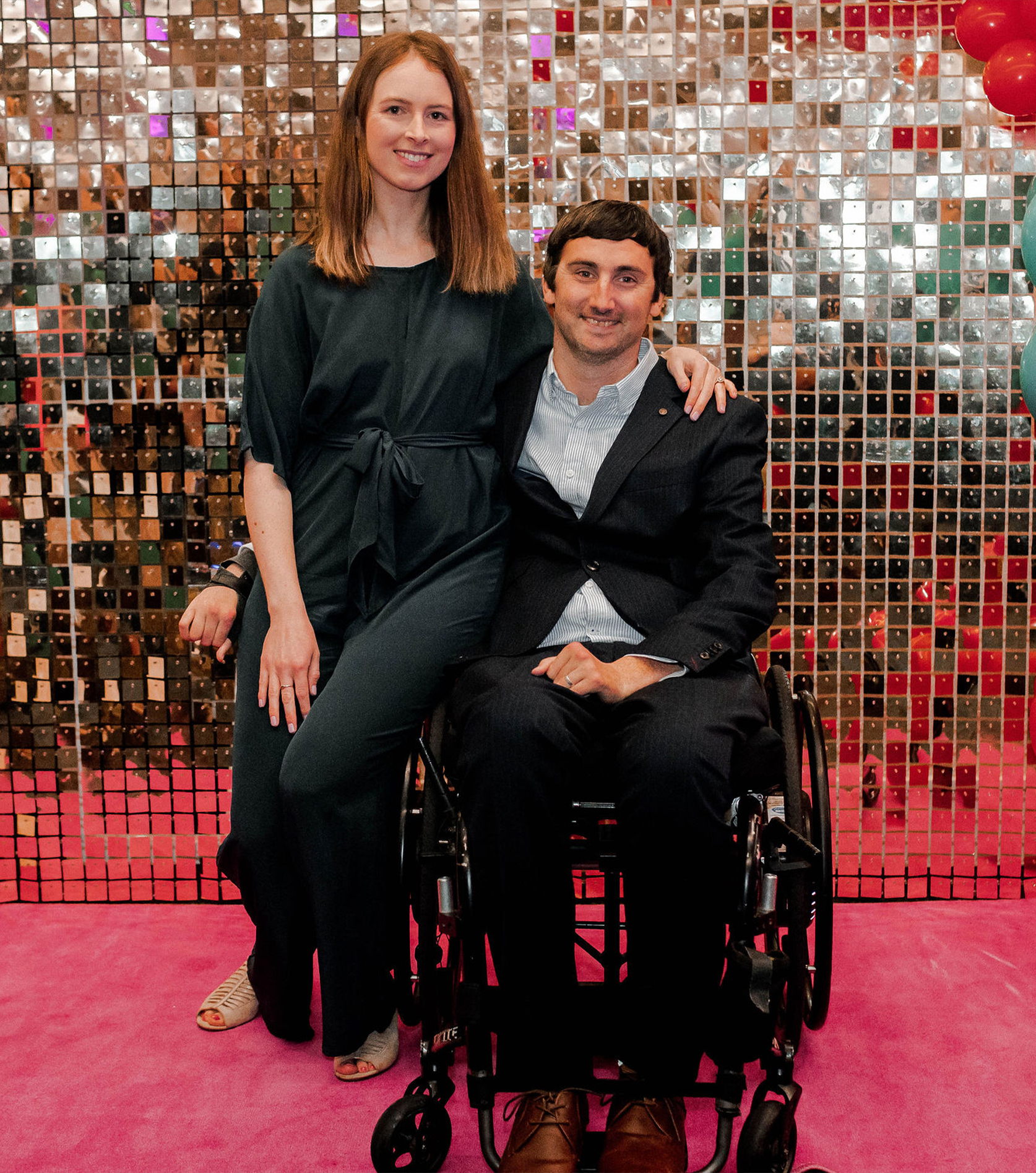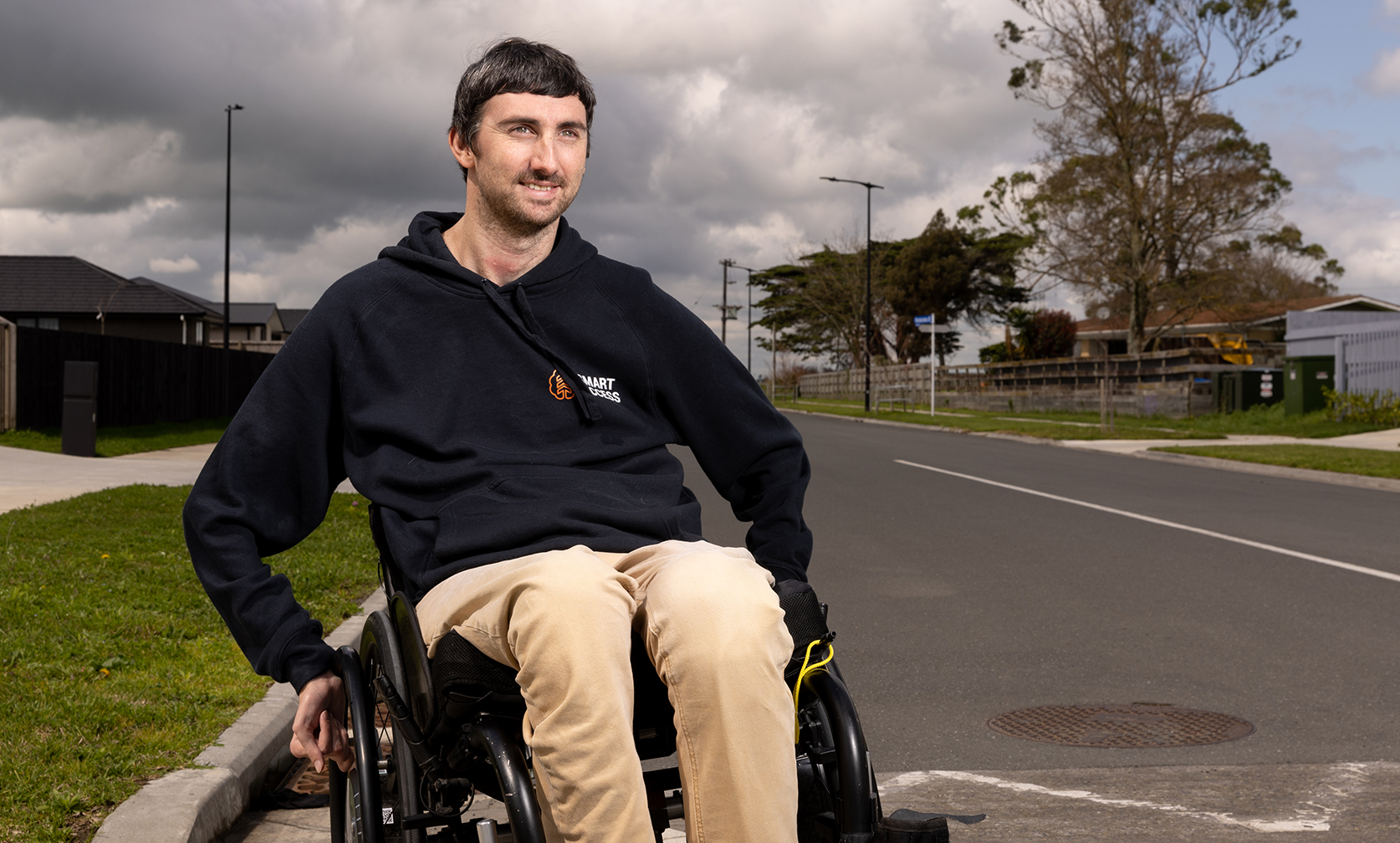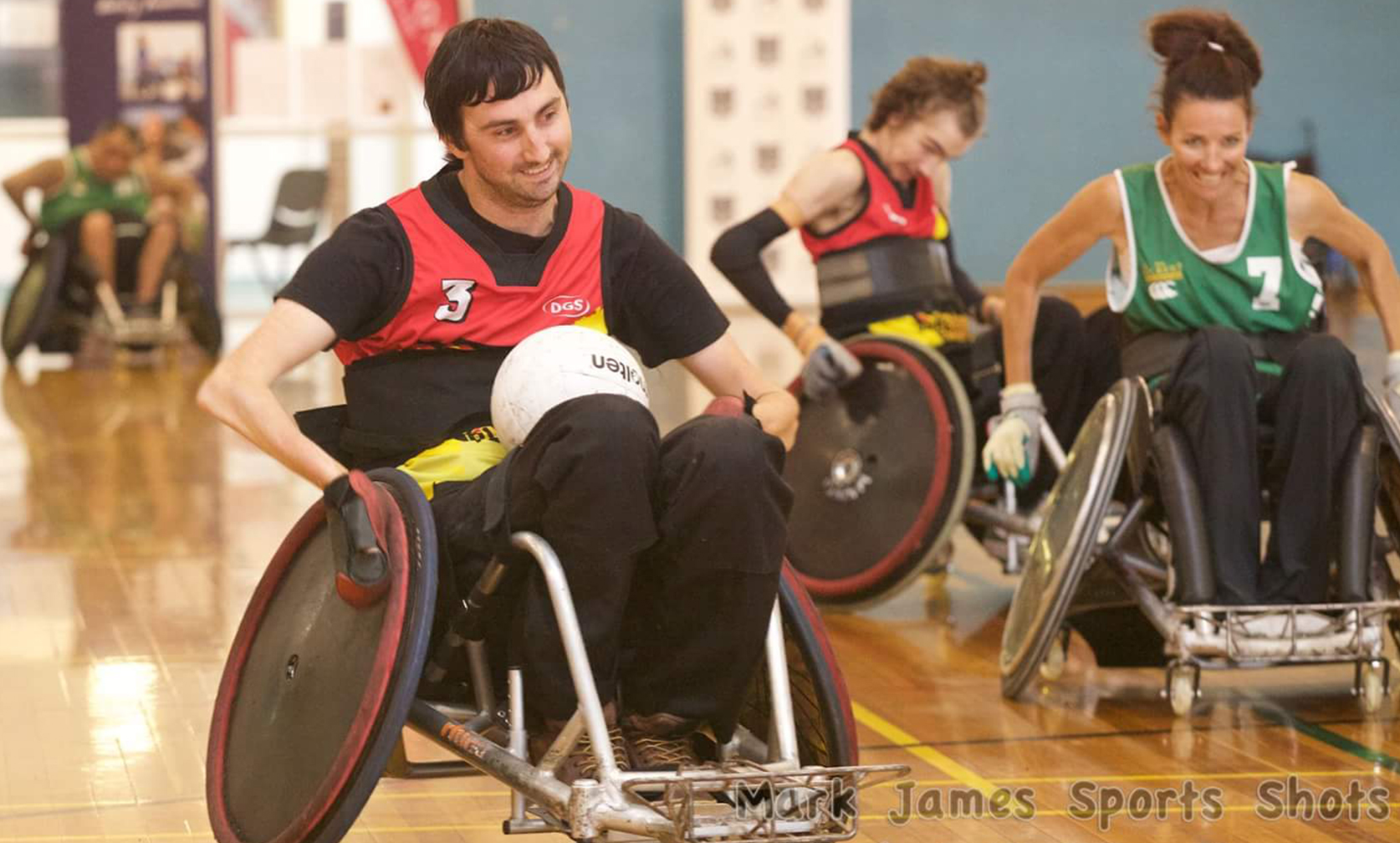An accident while performing a trick saw Tim land on his neck rather than his feet resulting in a break of his C5/C6 vertebrae.
After qualifying with a Master of Science and PostGrad Cert. in Educational Psychology, Tim focused on children’s education. He established Education These Days to promote technology that assists children’s learning.
As we fast forward to 2024, Tim is now happily married to Erika and father to 3.5 year old Jasper. His days are full, being the Founder and CEO of Smart Access Limited and the Chief Executive of My Life My Voice. Tim was also instrumental in the Magical Bridge Trust which created an accessible and inclusive playground now operational in Claudelands Hamilton.

Tim and Erika recently attended Luminary – a rare childless night out for them both!
We asked Tim a few questions on his current path:
I started Smart Access after facing many obstacles and barriers when traveling around the country as a tetraplegic and wheelchair user, when I was working on Education These Days and running for Council. I realised that if I knew where the barriers were, I could avoid them, and if Council knew where they were, they could remove them.
The uncertainty disabled people face when travelling can lead to a lot of anxiety, and ultimately lead to disabled people not going to new places often, because of the work needed to ensure a place is accessible first. We collect data on 40 features of the environment that can affect people’s mobility and provide the data for free on the Smart Access app. Smart Access gives a range of disabled people the information they need to plan a safe journey before leaving the house.
Most importantly, along with our reports, our data provides Council workers the information they need to prioritise infrastructure spending so that it has the greatest impact.
We now have data on 2300km of footpath in 12 cities around NZ and Australia, and we have just released our new navigation system that suggests the best route for pedestrians based on their individual needs. Wheelchair users will be suggested a route that avoids steep kerbs ramps and gradients, blind and low vision will be suggested routes that prefer signal crossings and tactile paving, and deaf and hard of hearing will be suggested routes that have crossing sight distances with high visibility.
For about two years, I’ve also been Chief Executive of My Life My Voice. My Life My Voice supports disabled people to live a good life in a range of ways. My Life My Voice facilitates a Peer Support Network (PSN) nationwide, a Kaitūhono/Connector service, we teach people about Enabling Good Lives (EGL), and we train disabled people and allies on how to use Artificial Intelligence (AI).
Our PSN teaches disabled people about the basics of the EGL, Te Tiriti O Waitangi, and the rights of disabled people, before teaching them skills on how to support other disabled people. Our PSN is free for disabled people to attend. We are facilitating the nationwide of EGL with our introductory workshops around Auckland, Tairāwhiti/Gisbourne, Nelson, and Invercargill, and with our Kaitūhono/Connector service in Mid-Central that supports people to develop and implement good life plans.
Our AI training is our newest and one of our most exciting offering. AI is so powerful that it can significantly increase or decrease inequality, depending on how well marginalised groups are educated about the potential benefits, and the potential dangers, which Are significant. We want to upskill disabled people and allies in the sector with lessons and workshops on how to get the most out of AI, and how to avoid the dangers.

The process was definitely challenging but definitely worthwhile! To get started we formed a Trust back in 2020 or 2021 and recruited some really experienced trustees. We then secured Trust Waikato as a key funder, and we formed a partnership with Hamilton City Council which included us agreeing on a site together before HCC allocated a significant chunk of their renewals funding to the project. We then reached out to a number of funders to fund the remaining of the $3.5 million project.
The Magical Bridge Playground is now open in Claudelands, Hamilton, and in our opinion is the best and most inclusive playground in NZ. It has been extremely popular with people travelling from hours away to play there. For some people, it’s the first time that they’ve played on a playground, or the first time some siblings have played together.
We plan on developing more playground features in Stage 2 of development at Claudelands once we raise enough money, and we are ready to help other Councils build a Magical Bridge Playground in their area.
Finding a partner and conceiving a child are both definitely more challenging with a SCI. I was always really positive and ended up finding a really amazing partner, and with ACC funding and a bit of luck, we conceived Jasper quite quickly.
Being a tetraplegic has affected pretty much every aspect of life including being a husband and father. The most important aspects haven’t been affected, which include being loving, attentive, and supportive, but the way I’m supportive has been different. I can’t be very hands on with Jasper physically, so I support Erika by keeping the house clean and cooking meals with my support workers.
At 3.5 years old, he’s slowly learning that I had an accident and that’s why I’m in a wheelchair, which is different than his friends’ Dads. So, they’re all interesting conversations, but I have no doubt that he’ll grow up to be a better person because I’m in a wheelchair. And I probably wouldn’t have met Erika and Jasper wouldn’t exist if I didn’t have my accident, so I can’t be mad about how things have worked out.
I used to be very involved with wheelchair rugby, but my son and business have put a pause on that. I’m starting to get back into it, as there’s a great culture in the sport that I want my son to see as he grows up. I’ve also tried sit-skiing a couple of times, and I’m interested in trying boccia.
Probably advancements in bowel/bladder function plus a little bit more movement would allow me to become independent, and reduce the number of kidney stones I get, which are the main things that affect my health. Being in a wheelchair is nowhere near as hard as losing independence.
Even just small improvements in movement can have a huge impact on independence and lifestyle. Research into SCI treatments and cures have come a long way, which gives me hope, but the problem has not been solved so we need more investment to get it over the line.

